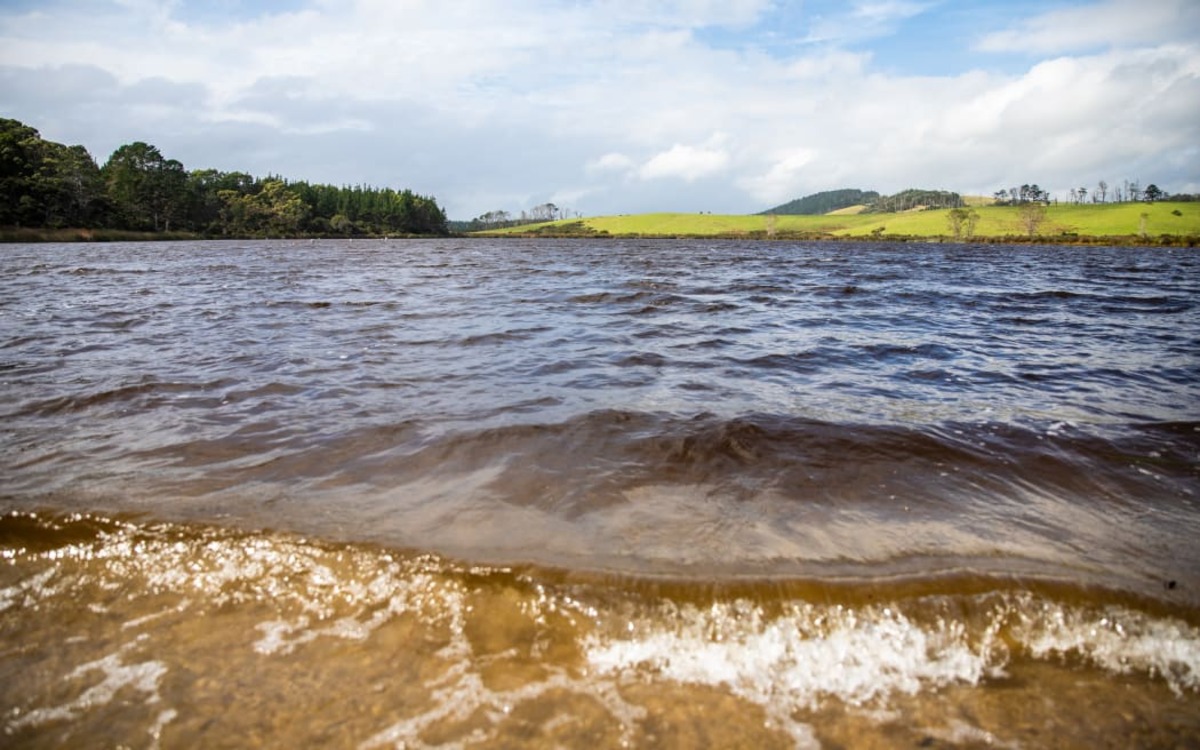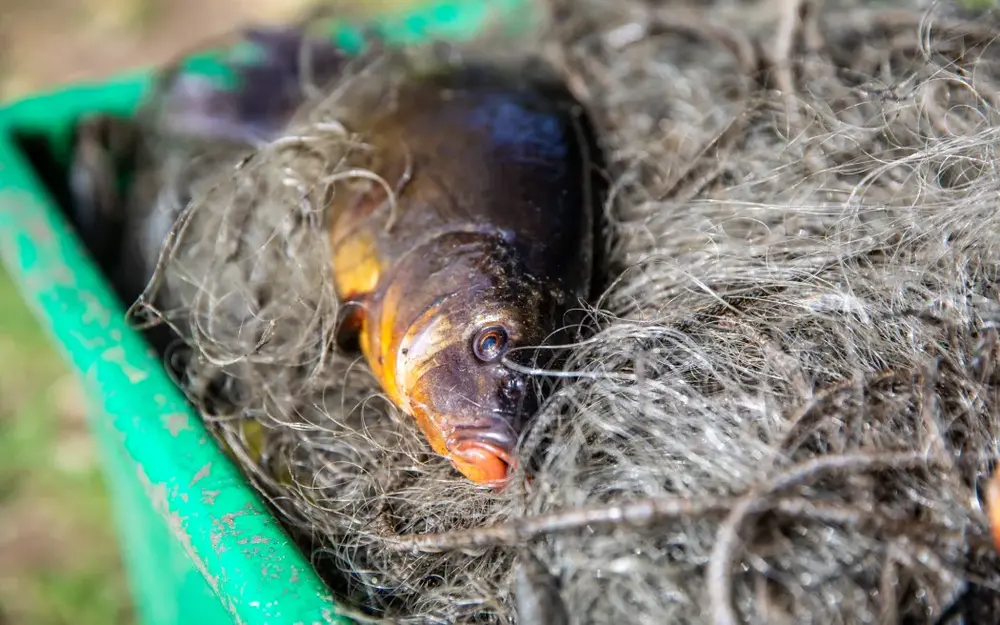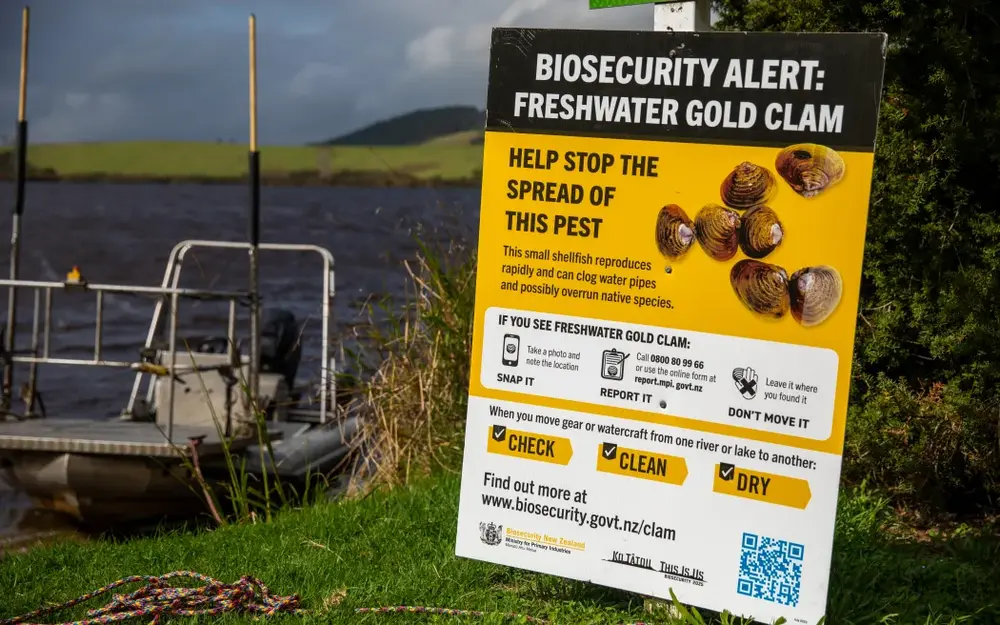'Hopefully we can fish them to extinction' - pest eradication at Auckland lake
RNZ
23 April 2025, 8:36 PM
 Photo: Nick Monro
Photo: Nick MonroA pest eradication project at Lake Tomarata north of Auckland is cleaning up water that has not been the same since a fanatical fisherman illegally introduced invasive fish more than 50 years ago.
Auckland Council - with assistance from University of Waikato - has been using gill nets to remove rudd and tench species which have had a devastating impact on the lake's ecosystem since they were introduced by an avid coarse fisherman in 1971.
Auckland Council freshwater ecologist Belinda Studholme said the water quality of Lake Tomarata was one of the fastest declining in the region.
"There are some key species in this lake that protect water quality. There's freshwater mussels, kākahi and then there's the native plants that grow across the lakebed that bind up all the sediment.
"So the kākahi are filtering out bacteria and sediment out of the water column, and the freshwater plants that form this meadow over the bottom would be binding up all the sediment so that it doesn't get re-suspended when it's windy or when there's boats.
"The pest fish rudd, they eat the native plants, so there's hardly any native plants growing on the lake bed now and the tench, they're benthic feeders, and they'll be eating the kākahi," said Studholme.
The native mollusc is a cornerstone in improving the lake's natural health, with a single kākahi having the ability to filter a litre of water an hour.
"Where you have large populations of freshwater mussels, they almost work like so-called ecosystem engineers - they're kind of self-cleaning the lake," said Waikato University Associate Professor Nick Ling.
Studholme said a bed of these freshwater mussels could filter much of the lake in about a week.
She said by improving their populations in the wild, they could improve many of New Zealand's polluted waterways.
"We've still got a few little pockets of them around the lake, but they're not thriving like they should be. "
"It would be amazing if we could grow them on demand, but they're quite finicky," she said.

Photo: Nick Monro
The gill nets have been placed every 50 metres across the lake, which was created when the formation of sand dunes along the coast prevented inland water from running out to sea.
No rivers or streams flow into Lake Tomarata and the surrounding lakes, meaning it is filled by rainfall and water seeping up through the sand.
But this special ecosystem has been compromised by the actions of Stewart Smith, a London-born fishing fanatic who moved to New Zealand when he was 15 in 1928. He spent years locked up in a conscientious objectors camp, after becoming a devout communist.
An avid coarse fisherman, Smith dedicated much of his life to "improving" recreational fishing in New Zealand by introducing these fish which he often bred in a garage.
According to Smith's own personal records, he illegally introduced more than 15,000 fish across New Zealand's freshwater systems between the 1960s and late 2000s.

Photo: Nick Monro
Ling said Smith targeted Lake Tomarata in 1971.
"They were introduced to this lake on the 18th of January 1971. He kept meticulous diaries of his activities, so he released 75 rudd and 73 tench into the lake on that date.
"He thought that New Zealand needed these species to make it a little piece of England and so he was very prolific, he introduced fish into a whole lot of lakes.
"Some of them didn't take actually, because the lake didn't support the species, but many of the lakes it did and now we've got this legacy problem, including things like koi carp in the Waikato River," he said.
Ling said they were beginning to get on top of the decades-long issue at Lake Tomarata.
"The work that we've done so far, we've set in excess of 35 kilometres of gill net in this lake over the last three years and our modelling suggests that we have removed more than 95 percent of the population.
"Hopefully we can fish them to extinction, but even if we can't get every last fish, at least we can suppress the population to a point where we start to see recovery of the water quality and the biodiversity values of the lake," he said.
This story was originally published by RNZ



